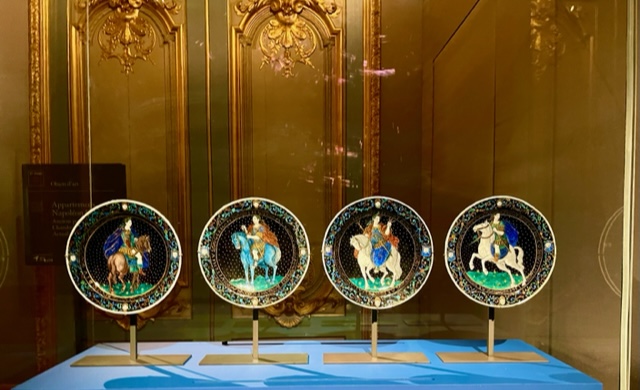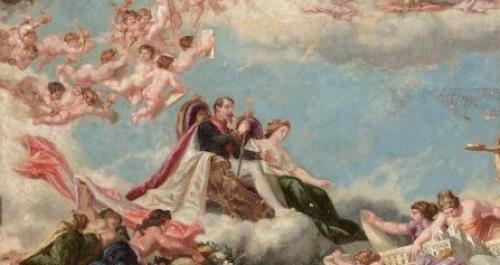-
About Us
-
Donors
-
Foundations & Projects
-
Beneficiaries
-
News
News
News
Culture & Diversity
Jean Limosin’s Plate, Acquired Thanks to the Fondation La Marck, Now on Display at the Louvre
News
Culture & Diversity
In 2020, the Fondation La Marck supported the acquisition of an enamelled plate for the Department of Decorative Arts at the Louvre Museum.
The donation led to extensive research on the creator of the plate, Jean Limosin, in cooperation with the Nationalmuseum in Stockholm. It also resulted in a particularly rewarding outcome for the patron: a dossier-style exhibition in 2023.
Jean Limosin’s plate is part of a series likely consisting of twelve Roman emperors on horseback, of which four are now known. As the Nationalmuseum in Stockholm held two of them, a joint study on Jean Limosin's works, beginning with this series, was launched. Françoise Barbe, Chief Curator at the Louvre Museum, took charge of the research, and the resulting publication will be released by the Nationalmuseum.

A small dossier-style exhibition on the subject was also organised, featuring the four known plates from the series displayed together for the first time. The buyer of the other plate from the Coutau-Bégarie auction (October 2020) kindly agreed to lend theirs. This exhibition took place from 19 April to 11 September 2023 in Room 535 of the Decorative Arts section, located at the entrance to the Napoleon III Apartments. On 29 June 2023, during the traditional donors’ reception in the Cour Marly, representatives of the foundation had the opportunity to view it. The four plates displayed side by side in a showcase made for an impressive sight!
In another case stood Jean Limosin’s famous large oval dish Esther and Ahasuerus, and in a third case were several small pieces, including salt cellars by his brother Joseph (one of which is signed in full, though more often only the monogram "IL" is found, making attribution more difficult). At the top of the large explanatory panel mounted on one of the walls was a note acknowledging the support provided by the Fondation La Marck.
In Françoise Barbe’s study, we learn that the model for the series of Roman emperors on horseback was originally designed by the Flemish painter Stradanus and engraved by Crispin de Passe the Elder. However, the enameller seems to have gotten somewhat mixed up: Vespasian is actually Caligula, Julius Caesar is misidentified as Claudius, and Titus as Domitian. Only Vitellius is correctly labelled. But even then, the coat of his horse is quite unconventional—against the deep midnight blue (starry) background chosen for the series, the enameller opted for a pale blue here, a touch of eccentricity that certainly draws attention!
Jean Limosin’s skill enabled him to employ a particularly demanding technique: delicate silver foil pieces cut into specific shapes to enhance and highlight certain motifs—these are known as paillons. He is also credited with two other series: The Labours of the Months (eight known plates) and mythological scenes (two small plates recently donated to the Louvre).
Among the grandchildren of the renowned Léonard Limosin (who died around 1576), Jean Limosin stands out significantly: by 1619, he had become enameller to the King, and by 1627, he held the title of Master Enameller to the King. It’s clear he caught the monarch’s attention by producing numerous portraits following the royal wedding.
The two plates from the Coutau-Bégarie auction came from the collection of Jules Porgès, a late 19th-century diamond magnate who filled his Avenue Montaigne apartment with an impressive array of art objects. Interestingly, Françoise Barbe noticed, in a period photograph of his interior, two other plates that may very well belong to the same series.

© Louvre / Hervé Lewandowski



